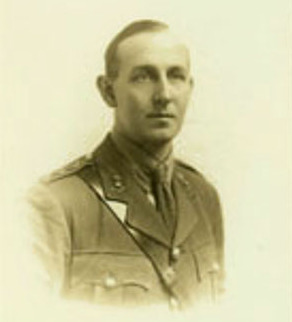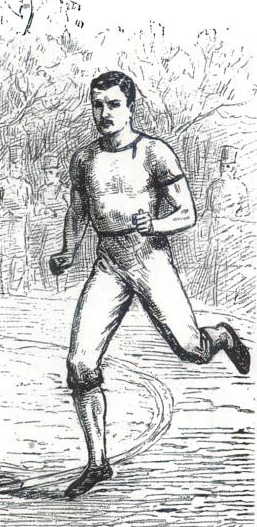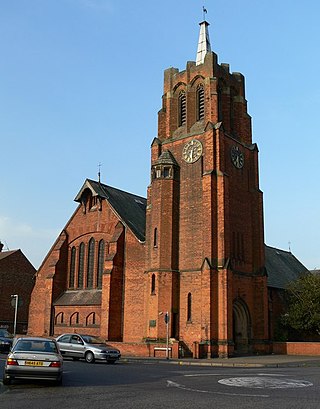Related Research Articles

Tonbridge is a market town in Kent, England, on the River Medway, 4 miles (6 km) north of Royal Tunbridge Wells, 12 miles (19 km) south west of Maidstone and 29 miles (47 km) south east of London. In the administrative borough of Tonbridge and Malling, it had an estimated population of 41,293 in 2019.

Tonbridge School is a public school in Tonbridge, Kent, England, founded in 1553 by Sir Andrew Judde. It is a member of the Eton Group and has close links with the Worshipful Company of Skinners, one of the oldest London livery companies.

Hadlow is a village and civil parish in the borough of Tonbridge and Malling in Kent, England. It is situated in the Medway valley, north-east of Tonbridge and south-west of Maidstone.
Harold Thomas William Hardinge, known as Wally Hardinge, was an English professional sportsman who played both cricket and association football for England. His professional cricket career lasted from 1902 to 1933 during which he played first-class cricket for Kent County Cricket Club and made one Test match appearance for England. He was described as being "for years ... one of the leading opening batsmen in England".
Hugh Christie School is a secondary school and sixth form based in Tonbridge, Kent, England. In November 2006 the school moved into a new £14 million building. The school currently has a roll of approximately 1000 students.
Alfred Stair was an English civil servant, who was the referee at the first three FA Cup Finals, all of which were played in London in 1872, 1873 and 1874. He entered the civil service in 1864 in the Treasury, becoming Principal Accountant in 1887 and Assistant Account-General in 1889. Alfred Stair served as Accountant and Comptroller-General of Board of the Inland Revenue at Somerset House from 1900 to 1910.

Bertie Oswald Corbett was an English footballer, cricketer and educator. He played football for England against Wales in 1901 and played cricket for Derbyshire in 1910.

Edward John May (1853–1941) was an English architect.
John Le Fleming was an English sportsman who played rugby union for England and first-class cricket for Kent County Cricket Club. He played rugby for Blackheath F.C. and Cambridge University R.U.F.C. and was a good all-round athlete, competing in athletics and figure skating. He was an Army tutor at Tonbridge School and served in the British Army during World War I.
George Cairns "Scatter" Hubbard was an English rugby union player who represented the England national team in two matches in 1892. He also played first-class cricket for Kent County Cricket Club in 1895.
The Gipsies Football Club was a short lived 19th century rugby football club that was notable for being one of the twenty-one founding members of the Rugby Football Union, as well as producing a number of international players in the sport's early international fixtures.
The West Kent Football Club was a 19th-century association football and rugby football club that was notable for being one of the twenty-one founding members of the Rugby Football Union, as well as producing a number of international players in the sport's early international fixtures.

Henry Cotterill was an Anglican bishop serving in South Africa in the second half of the 19th century. From 1872 until death he was a bishop of the Scottish Episcopal Church in Edinburgh.

Francis Luscombe was a rugby union international who represented England from 1872 to 1876. He also captained his country.
Alfred Joseph Baker was an English amateur sportsman who scored England's goal in the first representative match against a Scottish XI in March 1870. By profession, he was an auctioneer.

Walter Slade was a nineteenth-century British runner who set a number of world records for the mile as an amateur, but never became a professional athlete.
Edward Greenwood was an English cricketer who played in one first-class cricket match for Kent County Cricket Club in 1873.
Colonel Leonard Alison Hall Hamilton was an Indian born British Army officer and an amateur first-class cricketer. He was born in 1862 at the Mount Aboo Hill Station in Rajputana in what was then British India, the second son of Colonel George Harrison.

Stockdale Harrison FRIBA was an architect based in Leicester best known for Usher Hall, Edinburgh.
Alexander Hugh Hore was an English first-class cricketer and clergyman.
References
- 1 2 3 4 James Body Profile on scrum.com
- 1 2 3 Tonbridge School, Tonbridge, Eng; Hughes, Walter Oldham Hughes-, 1847-1894, ed, The register of Tonbridge School, from 1820 to 1886, also lists of exhibitioners, &c., previous to 1820, and of head masters and second masters (1886), p23, (Reading, I.I. Beecroft, Printer)